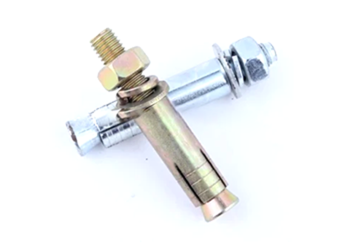11월 . 21, 2024 21:18 Back to list
what is a hex nut used for
What is a Hex Nut Used For?
Hex nuts are essential components in many mechanical and construction applications, serving as a crucial part of fastening systems. Understanding the purpose, variations, and applications of hex nuts is important for anyone involved in construction, engineering, or DIY projects.
What is a Hex Nut?
A hex nut is a six-sided fastener designed to secure two or more parts together. Typically made from materials such as steel, stainless steel, brass, or nylon, hex nuts are threaded internally, allowing them to be mated with a corresponding bolt or screw. The standardized shape and dimensions of hex nuts make them versatile and broadly compatible with various fastening systems.
Primary Functions of Hex Nuts
The primary function of hex nuts is to provide fastening strength. When paired with a bolt, the nut can be tightened to create a secure connection between components. This is particularly important in high-stress environments where parts may experience significant force or movement. A well-tightened hex nut can absorb vibrations and resist loosening over time, contributing to the overall reliability of the assembly.
Hex nuts also play a role in distributing loads evenly across the surface area of the connected parts. This load distribution helps prevent stress concentration points that can lead to material failure, making hex nuts an essential feature in many structural applications.
Types of Hex Nuts
what is a hex nut used for

There are several variations of hex nuts, each designed for specific applications
1. Regular Hex Nuts The most common type, used in general fastening applications. 2. Lock Nuts These include features that prevent them from loosening under vibration, such as nylon inserts or serrated edges. 3. Flange Nuts These have a built-in flange that acts as a washer, helping to distribute the load and preventing damage to the connected material. 4. Nyloc Nuts Characterized by a nylon insert that grips the bolt thread to provide extra friction, preventing the nut from loosening. 5. Coupling Nuts These are longer hex nuts used to connect two male threads, commonly used in electrical applications.
Applications of Hex Nuts
Hex nuts find their applications across a range of industries due to their versatility. Here are some notable areas where they are commonly used
1. Construction In building and infrastructure projects, hex nuts are used to secure beams, columns, and other structural elements, ensuring safety and stability. 2. Automotive The automotive industry relies heavily on hex nuts for assembling two or more parts of vehicles, from the frame to the engine components. 3. Manufacturing Machinery and equipment in factories depend on hex nuts to keep various parts and assemblies firmly secured during operation. 4. Furniture Assembly In the furniture industry, hex nuts are commonly used to connect different sections of modular designs, allowing for easy assembly and disassembly. 5. Electronics Certain electronic devices utilize hex nuts in the assembly of casings and internal components, showcasing their broad applicability.
Conclusion
In summary, hex nuts are vital components in ensuring the strength and reliability of fastening systems across various industries. Their simple design offers a practical solution for connecting and securing parts effectively. By understanding the different types of hex nuts and their applications, professionals and DIY enthusiasts alike can make informed decisions that enhance the integrity and durability of their projects. Whether you are constructing a building, repairing a vehicle, or assembling furniture, hex nuts are almost certainly at work, quietly holding everything together.
-
The Ubiquitous Reach of DIN934 in Application Realms
NewsMay.16,2025
-
Exploring Different Bolt Types
NewsMay.16,2025
-
Cracking the Code of Sleeve Anchor Mastery
NewsMay.16,2025
-
Clamp Design Principles,Types and Innovations
NewsMay.16,2025
-
Artistry Inspired by the Humble Anchor Bolt
NewsMay.16,2025
-
A Deep Dive into Screw Types
NewsMay.16,2025


